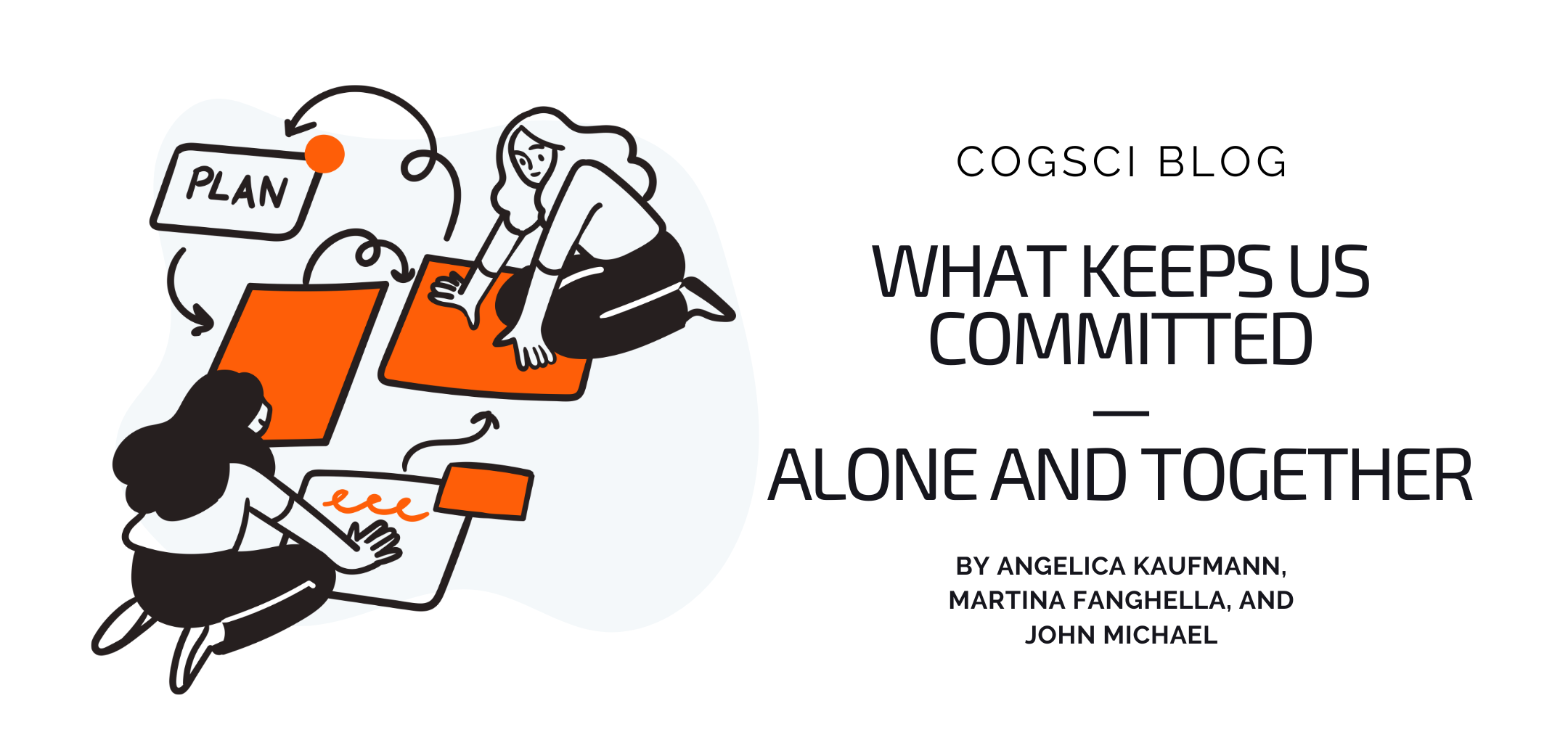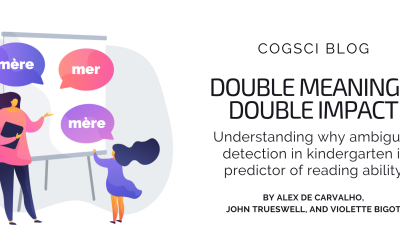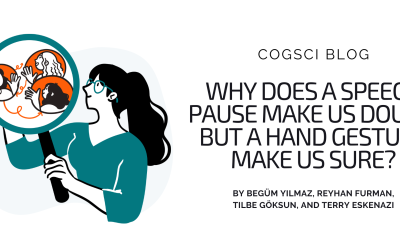Welcome to CogSci Unpacked, an exciting blog series dedicated to summarizing academic papers from the Cognitive Science, a CSS Journal. Our goal is to bridge the gap between academia and the broader public, fostering a better understanding of cognitive science and making it accessible and relatable to all. If you’re curious to dive even deeper, we invite you to explore the full academic paper.
Picture two researchers late at night in their lab. One is energised, absorbed in analysing results; the other is exhausted, pushing through the last few trials out of sheer obligation. Both are committed, but in very different ways. What allows one to stay engaged while the other must grit their teeth to continue? And what keeps both coordinated toward a shared goal despite fatigue, distraction, and doubt?
In our paper, we explore the cognitive and motivational mechanisms that help us persist in individual and joint actions. We argue that commitment functions as a dynamic coordination of control and motivation, allowing us to steer through distractions, maintain direction, and collaborate effectively over time.
Michael (2022) identifies two main forms of commitment that sit at opposite ends of a continuum: gritted-teeth commitment and engaged commitment. The first, gritted teeth commitment, occurs when you experience boredom or distraction, or are otherwise tempted to abandon a goal, but still exert effort to persevere. Engaged commitment, by contrast, feels almost effortless. When you are playing music, coding an elegant model, or writing a paper you care deeply about, time seems to disappear. Your focus is absorbed rather than forced. Here, intrinsic motivation keeps distractions at bay; you don’t need to suppress or avoid temptations because they never become salient.
In daily life, we move back and forth between these two poles. A project may begin with gritted-teeth effort and evolve into engaged absorption as interest deepens. Or, as fatigue sets in, the reverse. Our framework helps to describe how the mind dynamically manages these shifts.
To make sense of these fluctuations, we draw on Shepherd (2014)’s distinction between different types of control that help us stay committed. Some demand effort and focus, while others operate more smoothly and automatically. Depending on the situation, we shift between these modes—sometimes pushing through distraction, sometimes guided by genuine interest and motivation.
Neuroscientific evidence supports this view. Research shows that regions of the prefrontal cortex (PFC) are crucial for sustaining goal-directed behaviour by suppressing irrelevant impulses and anticipating obstacles. Studies of proactive versus reactive control (Braver, 2012) suggest that people who prepare for challenges before they arise (using proactive control) are better at maintaining long-term commitment. Electrophysiological work on the readiness potential, a neural signal preceding voluntary action, even hints at how the brain differentiates between spontaneous, intrinsically driven actions and effortful inhibition. This might explain the transition from engaged to gritted-teeth commitment at the neural level.
Human cooperation depends on our ability to sustain joint commitments. In collaborative contexts, the same control and motivational systems that guide individual persistence help partners act jointly. Mutual expectations, shared effort, and social feedback can enhance both gritted-teeth and engaged commitment, showing how our control and motivation systems scale from the individual mind to collective action.
Commitment, then, is not a single process but a flexible interaction between control and motivation. Sometimes it demands discipline; sometimes it flourishes through passion. By understanding the mechanisms that let us switch between these modes, and how they operate in social contexts, we can better grasp how human beings stay the course, together.
About the authors
Angelica Kaufmann is a philosopher at the Cognition in Action Unit, University of Milan, working on the Philosophy of Mind and Cognitive Sciences, Comparative Psychology, and Cognitive Neuroscience.
Martina Fanghella, a psychologist at the Cognition in Action Unit, University of Milan, studies Joint Action, Sensorimotor Representation, Cognitive Control, Dual-EEG, and Neurodevelopmental and Psychiatric Disorders.
John Michael, Associate Professor of Philosophy at the University of Milan and Principal Investigator of the Cognition in Action Unit, investigates the Philosophy of Psychology and Cognitive Sciences, Commitment, Social Cognition, and Joint Action.
Selected bibliography
Bermúdez, J. P. (2021). “The skill of self-control”. Synthese 199 (3-4):6251-6273.
Braver, T. S. (2012). “The variable nature of cognitive control: a dual mechanisms framework”. Trends in cognitive sciences, 16(2), 106-113.
Kaufmann, A., Fanghella, M., Michael, J. (2025). The Compass of Commitment: Control Mechanisms Underpinning the Sense of Individual and Joint Commitment. Cognitive Science.
Michael, J. (2022). The Philosophy and Psychology of Commitment (p. 126). Taylor & Francis.
Shepherd, J. (2014). “The contours of control”. Philosophical Studies. 170.



